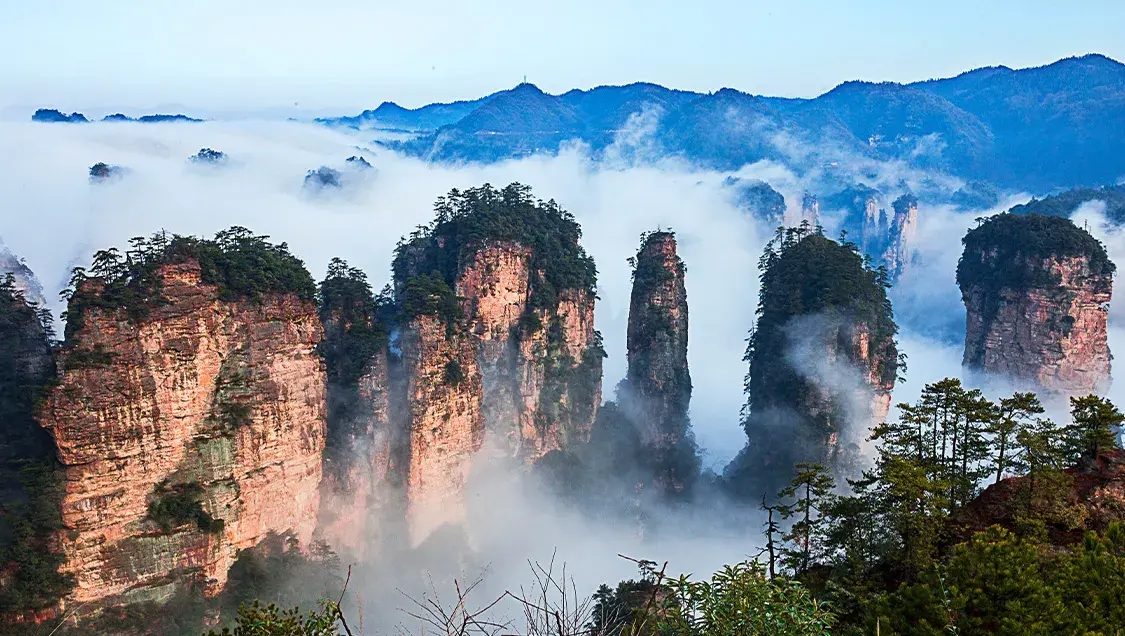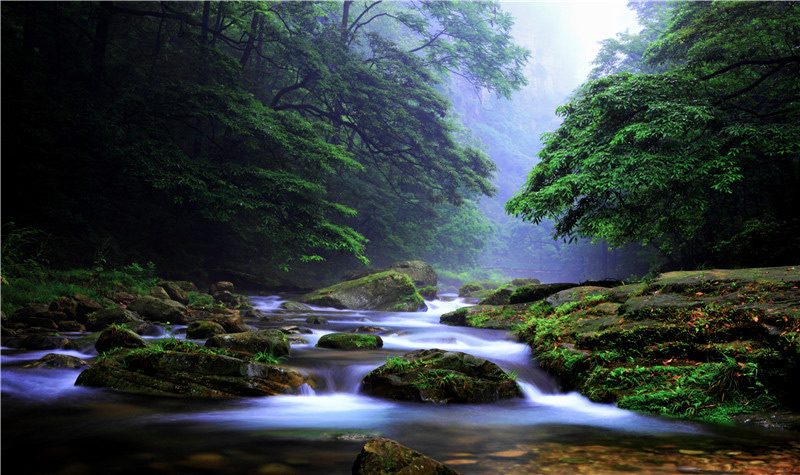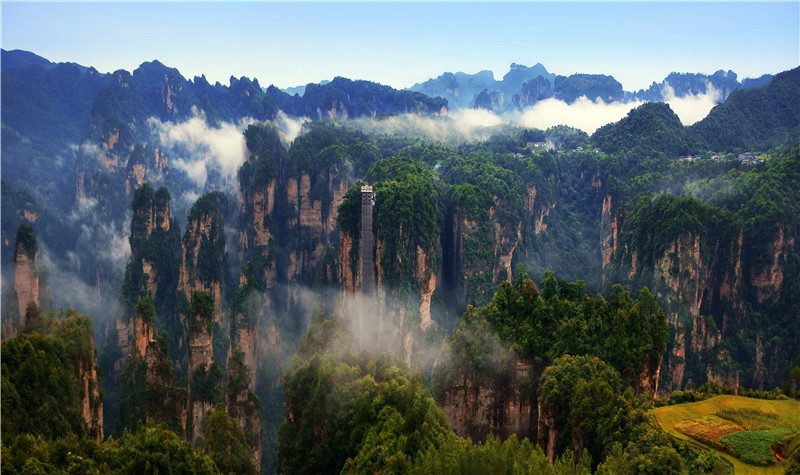Zhangjiajie National Forest Park, located at No. 279, Golden Whip Road, Wulingyuan District, Zhangjiajie City, Hunan Province, China, is the first place in China to be honored with the title of National Forest Park, as well as a World Natural Heritage Site, a World Geopark, and one of the earliest batch of China’s 5A tourist attractions to be assessed. Since its establishment in 1982, this magical land has been attracting tourists from all over the world with its unique quartz sandstone peaks and forests landscape, rich natural ecological resources and deep cultural heritage.
The park is located in the eastern section of the Wuling Mountains, where the mountains are stacked up and the terrain slopes gradually from northwest to southeast. The total area of the park is vast, amounting to 4,810 hectares (also said to be 5,000 hectares), with unique natural conditions. It has a humid monsoon climate in the northern subtropical zone, with an average annual temperature of about 17℃, sufficient annual precipitation and obvious changes in the four seasons, which provides an ideal growing environment for all kinds of organisms.

The predecessor of Zhangjiajie National Forest Park was the state-run Zhangjiajie Forest Farm, which was named “Zhangjiajie National Forest Park” with the official approval of the Chinese government on September 25, 1982, and the Wulingyuan area with Zhangjiajie National Forest Park as the core was listed on the World Natural Heritage List by the United Nations in December 1992 because of its unique quartz sandstone Great Peak Forest. In December 1992, the Wulingyuan area, which is the core of Zhangjiajie National Forest Park, was inscribed on the World Natural Heritage List by the United Nations for its unique quartz sandstone Great Peak Forest Landscape. In addition, it has been honored with a number of awards, including National Key Scenic Spots and China’s first national 5A-level tourist attractions.
The core landscape of the park is the world’s unique sandstone peaks and forests, and these peaks and forests and karst landforms contrast with each other, constituting a breathtaking natural beauty. There are more than 3,000 towering rock cliffs in the park, of which more than 1,000 are over 200 meters high, and the Golden Whip Rock is a spectacular 350 meters high.

The main attractions in the park include the Yellow Stone Fortress, Golden Whip Stream, Yuanjiajie and Yangjiajie. Huangshizhai is the largest and most concentrated viewing platform in the park, and is known as “not going to Huangshizhai, in vain to Zhangjiajie”. Golden Whip Stream is 7.5 kilometers long (some say 5.7 kilometers), named after the eagle that protects the whip along the way, one of the Ten Great Scenes of Zhangjiajie, and the picturesque scenery along the stream makes people forget to go back and forth. Yuanjiajie is the location of the Hallelujah Mountain, the levitating mountain in the movie “Avatar”, with its spectacular stone pillars. Yangjiajie is characterized by quartz sandstone peaks, forests and canyons, and the scenery is breathtaking.

In addition to unique natural landscapes, Zhangjiajie National Forest Park is also rich in animal and plant resources. The park has a wide variety of woody plants, totaling 517 species in 93 families, which is more than double the number of species in the whole of Europe. Among them, the dove tree (also known as “China’s pigeon flower”), which is protected at the national level, as well as the bell-calyx tree, ginkgo, and fruit tree, which are protected at the national level 2 and 3, are among the precious tree species in the park. In addition, the park is home to 40 kinds of state-protected animals, making it extremely rich in ecological diversity.
Here, are you most interested in finding out how to get to Zhangjiajie National Forest Park and start your journey?
Zhangjiajie National Forest Park is a tourist attraction integrating natural scenery, humanistic landscape and ecological resources. The beauty of the park is so refreshing that it is like being in a heavenly realm on earth, which makes people forget to come back.
